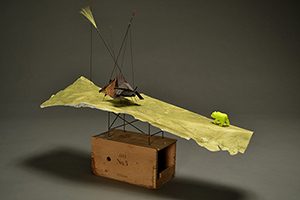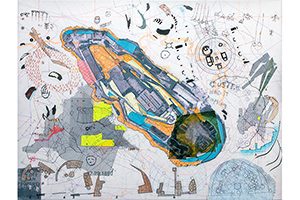What would Alcatraz Island look like today if the Occupation of Alcatraz (1969-1971) had ended the way that its organizers intended: with Indian control of the island and the erection of a museum, spiritual center and other major collections and centers sharing the stories of Indians of All Tribes?
Chris Cornelius, UWM associate professor of architecture, has designed his own answer to that question in the form of his “Domiciles” exhibition, which opens at Travois in Kansas City, Missouri, on Friday, March 2.


The architecture professor is a citizen of the Oneida Nation of Wisconsin and founding principal of studio:indigenous, a design and consulting practice serving Native American architects. Travois describes itself as “a mission-driven business focused exclusively on promoting housing and economic development for American Indian, Alaska Native and Native Hawaiian communities.”
Cornelius provides the historical context for Domiciles in his artist’s statement: “The (American Indian) occupiers took (Alcatraz) by asking the U.S. Government to honor a treaty they had made 100 years prior … they wanted it to create an American Indian cultural center that included American Indian Studies, and an American Indian spiritual center, an ecology center and an American Indian Museum.”
He was selected to participate in the Travois First Fridays series, featuring the work of indigenous artists, by a jury of artists and Kansas City industry professionals. Cornelius describes his Domiciles work as “a means to visualize the importance of that occupation in that place, at that time. It is an important time in our country’s history when American Indians were speaking openly about their distrust of the American government, their policies, and American Indian life. For me, the work reflects on the importance of those events and is a way of bringing attention to the same issues in 21st century America.”



